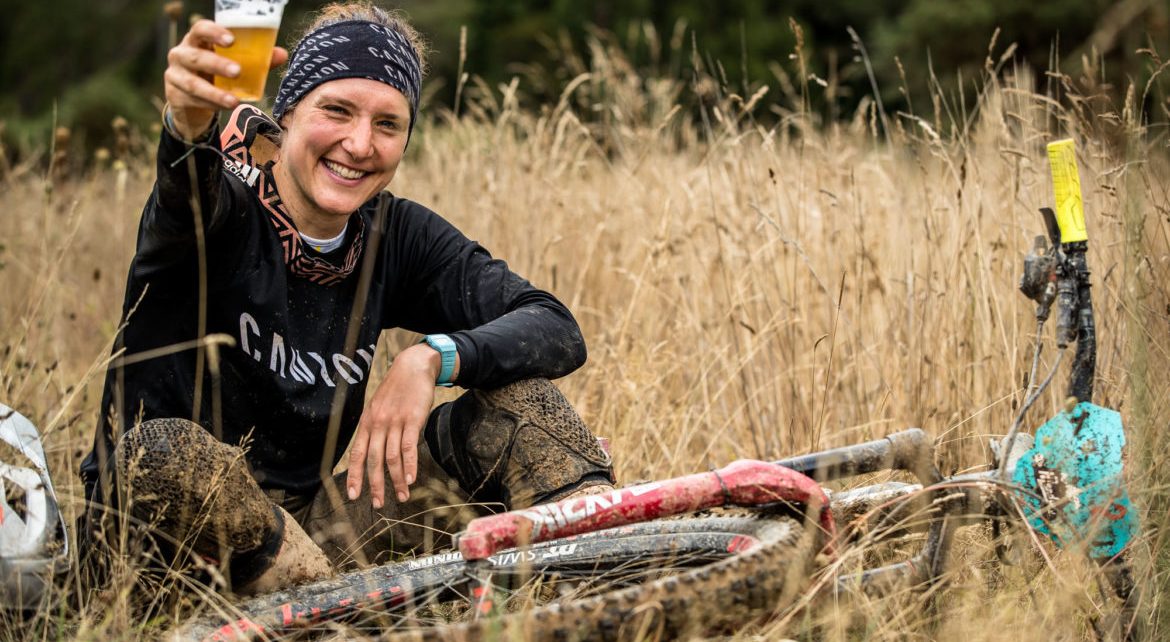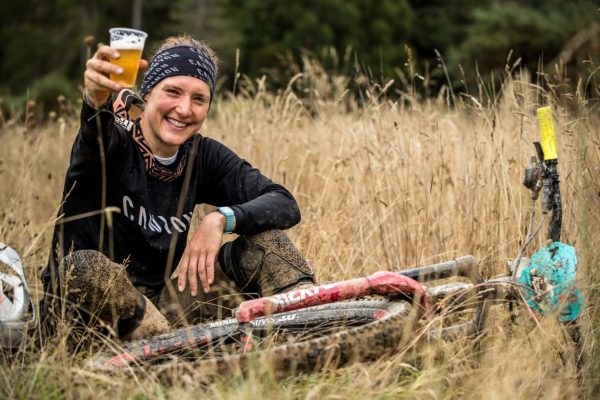
We have reached a point in the enduro timeline where there are top level riders who didn’t migrate to the sport from XC or DH, but are “enduro-first” professionals. It’s like being a professional at the most broadly challenging form of mountain biking. Fortunately, there are folks who have been around since the beginning to show those newcomers the ropes. Ines Thoma has been racing enduro since the beginning of the EWS, and the German athlete showed up with a wealth of cross country fitness and knowhow from day one.
Despite her extensive gravity history, Thoma’s career isn’t showing any signs of slowing down soon, with an 11th place overall ranking in the 2018 Enduro World Series, and 7th position in 2019. She’s won multiple rounds of the series over the past seven seasons, won the Trans Provence a few times, taken the Megaavalanche title, and she’s primed to roll into 2020 as hot as ever.
Like most athletes, Thoma has recently had to reset her training plan to suit the rescheduled calendar. We caught up with her amidst some newfound free time to get a better look at what life is like for the Canyon Collective rider.
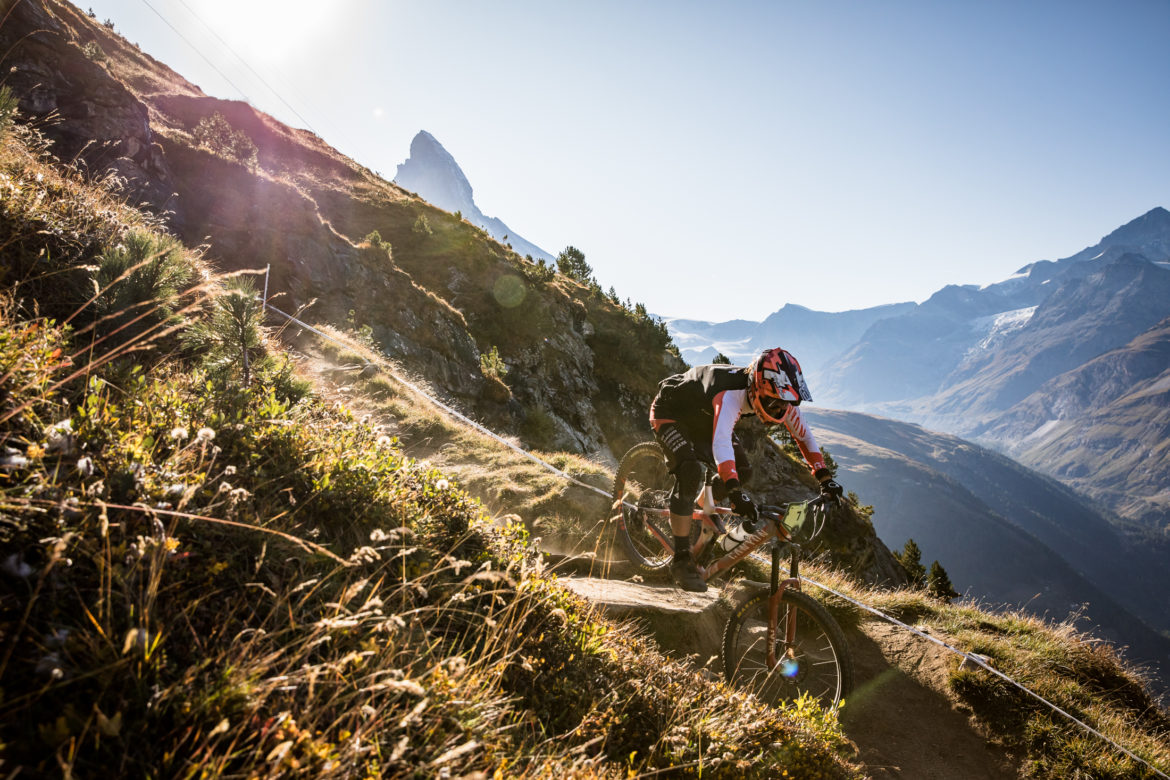
What part of Germany do you live in and what’s your favorite trail in the area?
I live in a small beautiful mountain area called Allgäu. We are located at the very South of Germany about 20 minutes away from the Austrian border. My favorite trail is one built by locals here, super steep, rooty and especially in the wet it can be pretty gnarly. We call it little Canada. Unfortunately, it is not so legal, like many trails in Germany, so I cannot tell the exact location.
When did you first get into mountain biking, and how did that translate to racing enduro?
Haha yes, I am probably too old to say that I have always raced enduro. When I was a kid I started racing cross country at the age of four. This was around 1993. There was not anything like enduro in Germany at that time. But it has been a great experience to race in that discipline for over 15 years with my first international experiences in the National Team doing the Word Champs in New Zealand, Scotland, and Italy 2006-2008.
After a couple of knee injuries, I had to do some surgeries and didn’t want to go back into cross-country. My switch to enduro came step by step. Not really planned and never meant to become professional. For me, enduro was just a super fun format. I traveled with friends to these races, where compared to my XC times, everything felt super relaxed. In the first two or three years, I could achieve some good results in races like the Megavalanche, other mass start races like the Gang Battle in Saalbach or the Trailfox in Films. When the EWS started in 2013 I finished my exams the same year and started to train professionally for enduro. With Canyon offering me a pro contract, everything turned out better than I had ever dreamed.
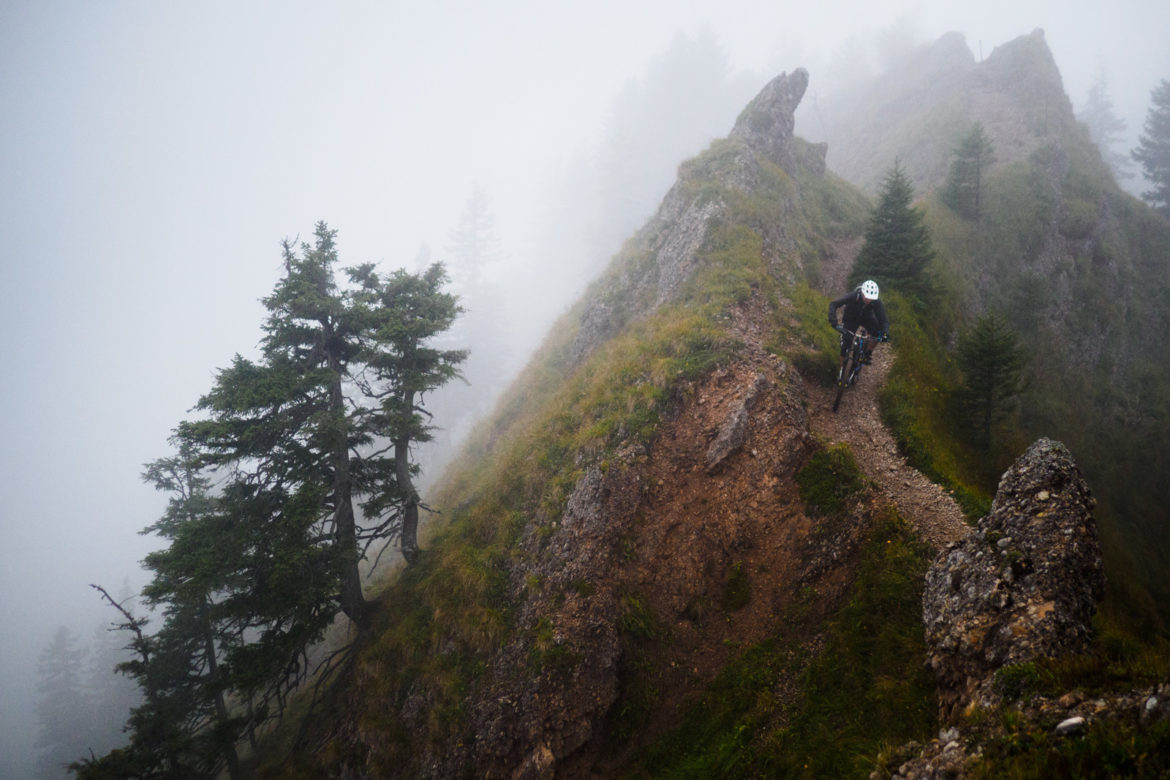
Can you share one of the most challenging mechanicals you have experienced over your professional career?
Mentally challenging were for sure the ones, where I was on podium course and felt I lost a good result like last year in Canazei when I punctured in the second to last stage.
However, the most challenging one was probably in Finale Ligure some years ago. The first stage of the weekend was the longest of the race with 25 minutes race time. Unfortunately, I punctured [a third of the way] down the track when I hit a rock at full speed. I decided to fix the tire with Dynaplug, then tube and all the CO2s I had. Bad idea, as it somehow didn’t want to work out. In the end, I still had to work my way down the long and gnarly trail just on my rim and even let all the top 30 men pass, who were starting after us girls. I lost over 25 minutes in total.
I managed to fix the tire with another tube and the help of some of the top guys and raced the 800 vertical meters back to the second stage. Just in time for my run. I think I have never been so done at a race, for the worst result of my career. Thanks to a night shift of my mechanics I could finish the race. And even claim some top three stage results. Despite all the stress and bad result, that made me very satisfied with the weekend.
What is your favorite bike maintenance or service task to perform?
Suspension setup. Perfectly set up suspension that is running super smooth, is something incredible. Some months ago, in February, we met with the RockShox team in the South of France for a test camp. It was super efficient and interesting to focus for several days just on the suspension.
How much do you focus on nutrition? How important is healthy eating for enduro athletes?
It is really important, like for all professional athletes. We all have to find our own way to feel well and healthy in our bodies and find the best energy for racing and recovery. I try to have the right balance between healthy food and also allowing myself sweets when I need them.
For me healthy food means local and organic ingredients, a lot of fruits and veggies, freshly cooked, to keep the body’s acid-base-balance right. I don’t drink milk and I eat full vegetarian. And I always try to avoid highly processed food. Nutrition on race days is also really important. For pit stops, I normally prepare something like a rice or quinoa salad with avocado, nuts, and tomatoes. While riding I really like the Rapunzel fruit bars and the Clif Bar Bloks
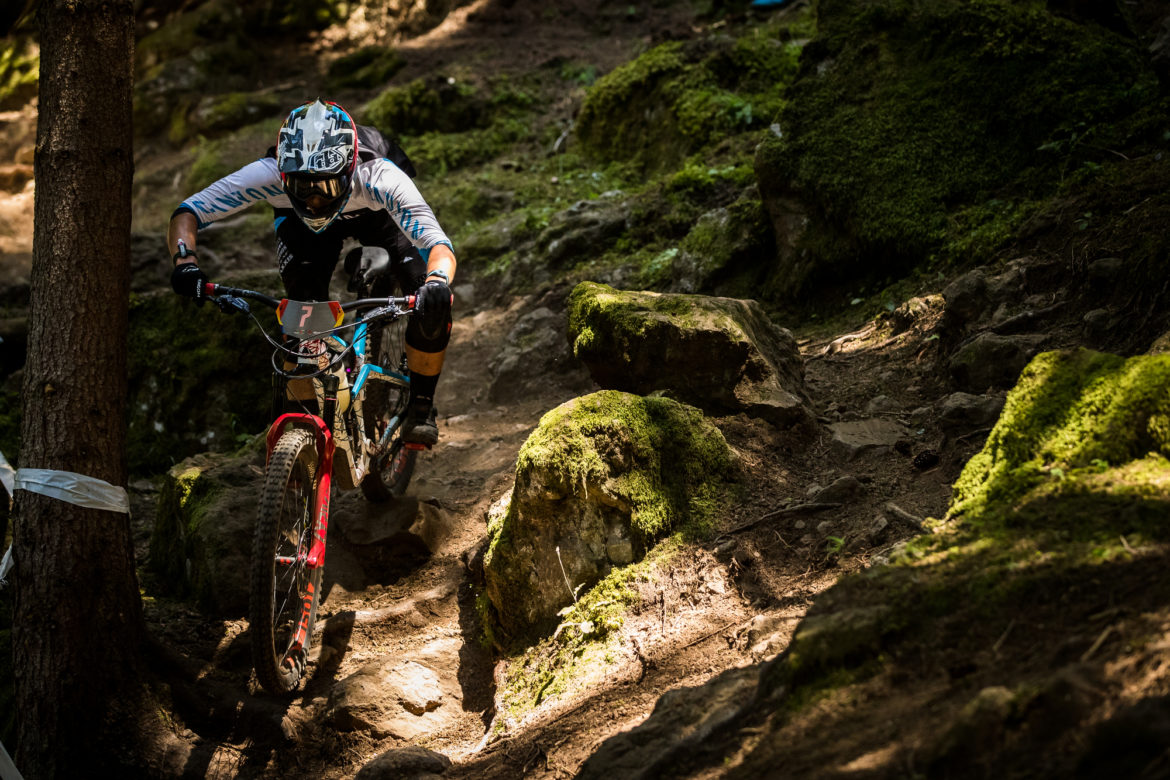
What do you do to work on skill in the off season? Do you work with a skills coach?
That is a nice question, as we just set up a trials parkour [course] in the garden for times of Corona[virus] and lockdown. For sure I set some goals for the off-season, to work on my weaknesses or learn new moves. At the moment I practice wheelies, stoppies (to learn to switchback faster on the front wheel) and to ride a fakie just because it looks cool. Also, back wheel hops are a dream of mine to learn. In addition, we got a super nice asphalt pump track close to the house, where we go regularly.
What is your favorite EWS location so far? Do you have a favorite track to race as well?
Puh. Tough questions. I have raced seven full EWS seasons, with one venue better than the other. Chile is definitely always a favorite country to go to. The trips there were always super exiting with beautiful landscapes and the venues, Nevados de Chillan and Lo Barnechea, both have super amazing tracks.
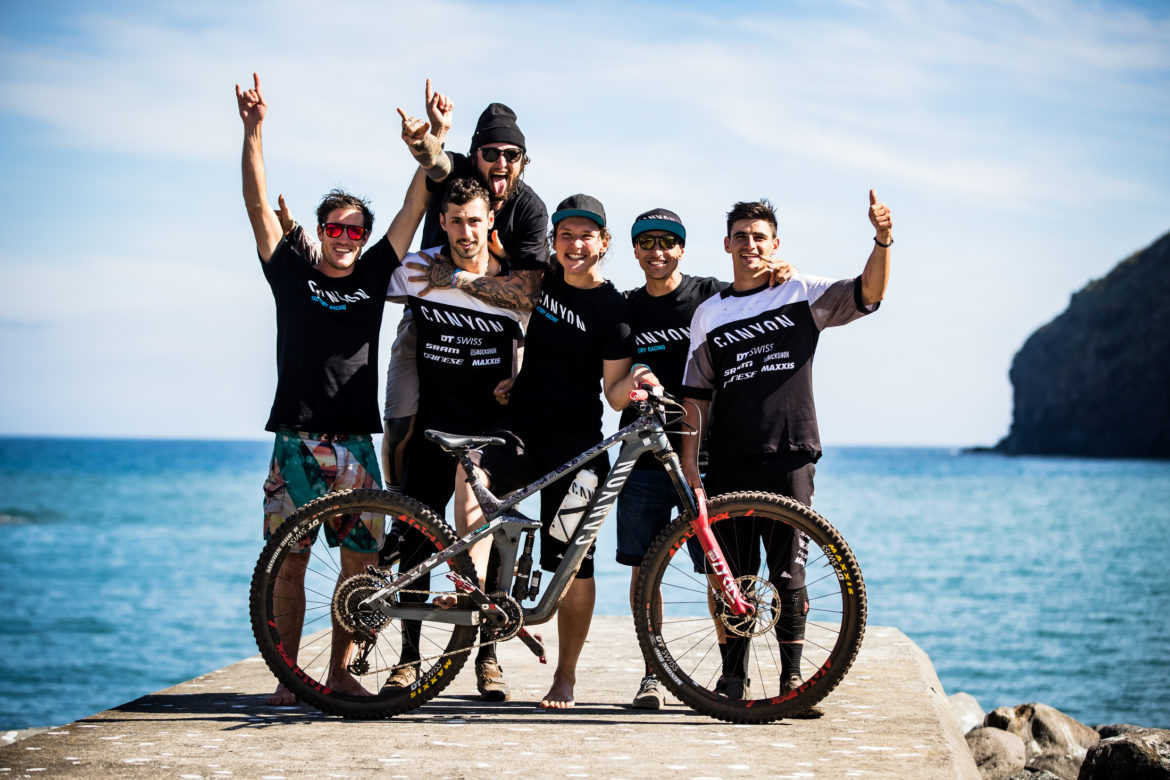
Are you racing and training full time, or also working a separate job?
I am racing full time. What a dream! For sure racing and training are not the only things I do. Skills clinics, camps, travel stories, photo shootings, and other things are part of my job as well. But everything happens to be on two wheels.
Apart from racing, do you do other work with Canyon?
Sure. As a race team we are a marketing tool for brands and help to realize video and photo productions, help with events and bike launches. Beyond that we also work together with the engineers, designers and brand managers to give feedback and develop the Canyon bikes, clothes etc. It is an amazing brand to work with and they take their athletes and the pro sport department really seriously. The Strive, our Enduro Bike, has been designed for racing and winning the EWS. Since the series started in 2013 we had different versions and updates and the bike got better and better.
But apart from bikes, Canyon also started a complete new clothing department. As an example, we asked for a super light but also reliable and waterproof rain jacket, small packing, hoodie for wearing it over the helmet and storage for goggles. We tested some prototypes, gave feedback and now we have a perfect product — the Signature Pro MTB Jacket — for racing that is also available to customers in a women’s and unisex fit.
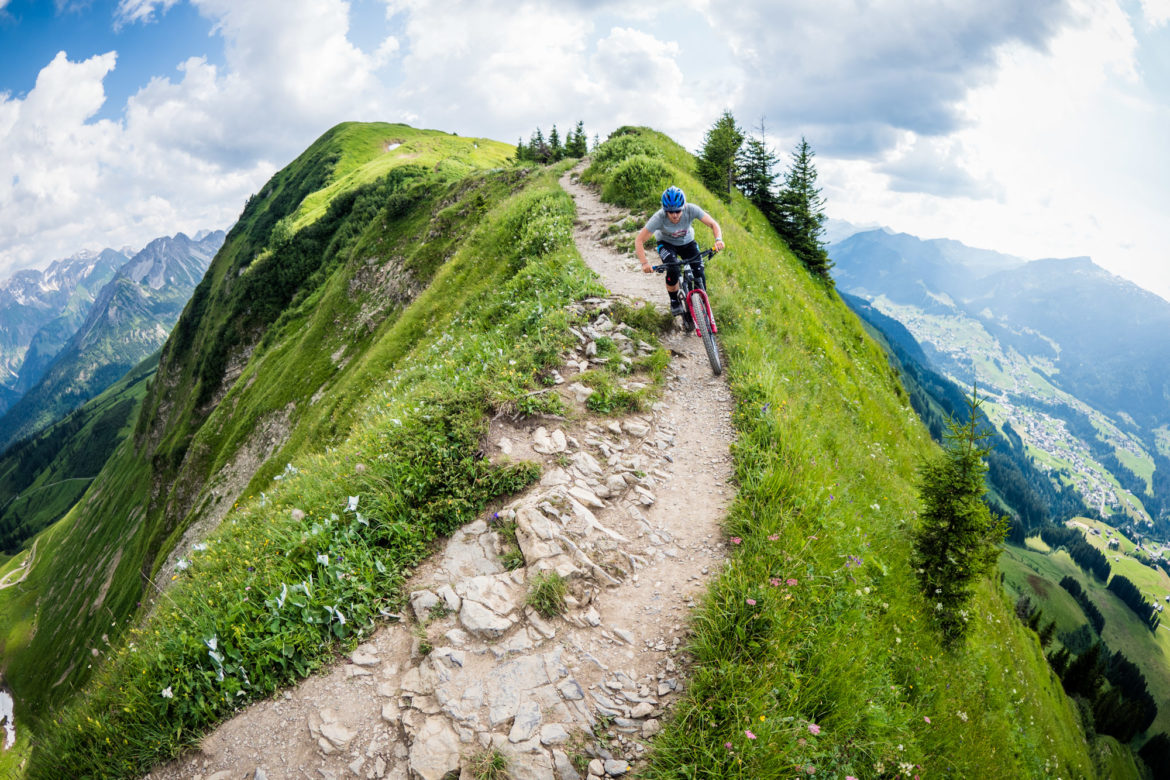
How has the quarantine affected your training? Do you have to change things at all due to the later season start?
Yes, for the sure. The quarantine changed the whole season by postponing it for 3-5 months. So at the moment, we changed the training back to how it was in December. Less intensity, more repetitions in the gym and more endurance training. If you keep the intensity going for the next months, I think the season will be too long and we will be exhausted by September.
What element of mountain biking do you particularly excel at?
I am definitely strong-minded and stubborn. I have never stopped a race or given up. Even when it didn’t look good for me. Haha. Other than that you can probably still see my XC background as I like long stages with a high amount of endurance needs.
What’s your favorite thing about your race bike?
Still the [Canyon] Shapeshifter. Since we got a new remote for it, it is really easy to use on any kind of climb or pedaling section and makes the bike way more efficient to pedal. What I also really appreciate is my new SRAM AXS. The shifting and Reverb are so precise and the remote super effortless. And the cockpit looks nice and clean.
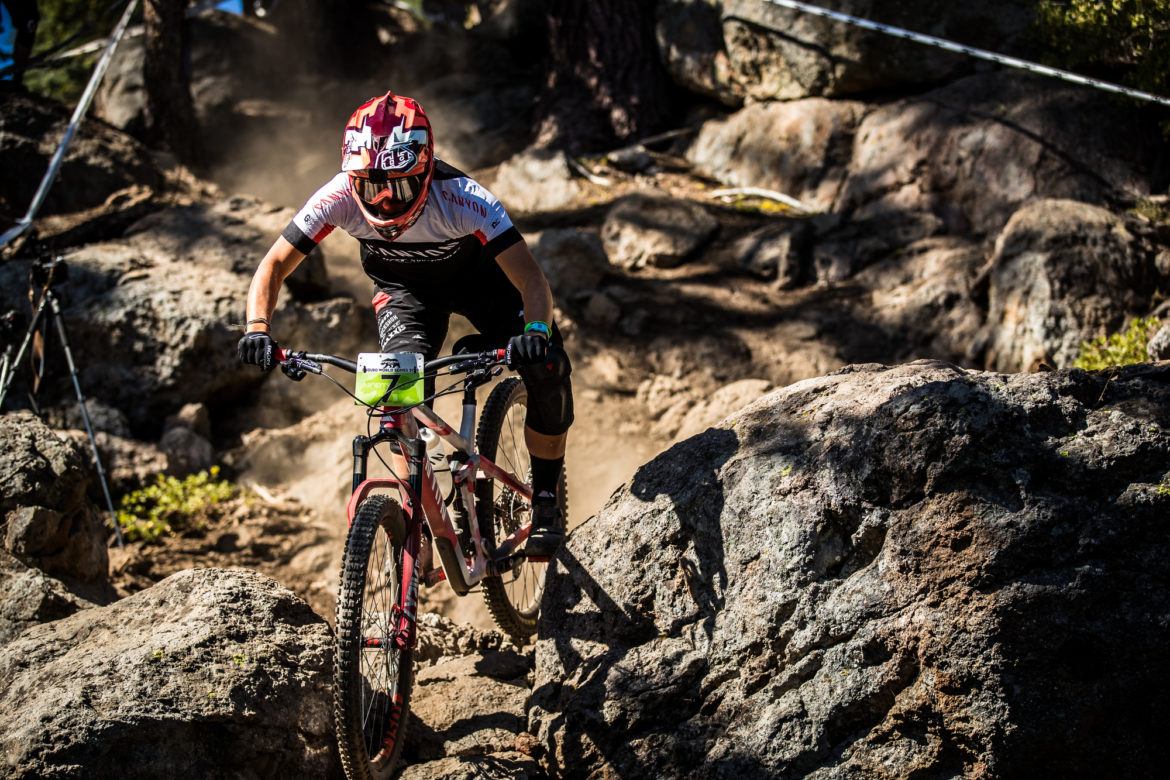
What are a few unique things your mechanic (or you) has done to your bike setup?
At the moment I am stoked with my Canyon Strive. It is definitely one of the best race bikes out there. We put a spacer ring under the head tube to make the bike a bit slacker, and I use the Lyrik with 180mm travel. Other than that is is a normal bike like everybody can buy.
What tire pressure do you typically run, front and rear?
1.2-1.4 bar (17-20psi) in the front and 1.4-1.7 bar (20-25psi) in the back. Depending on the weather and track conditions. Less air if it’s slippery and more if it’s super rocky and rough.
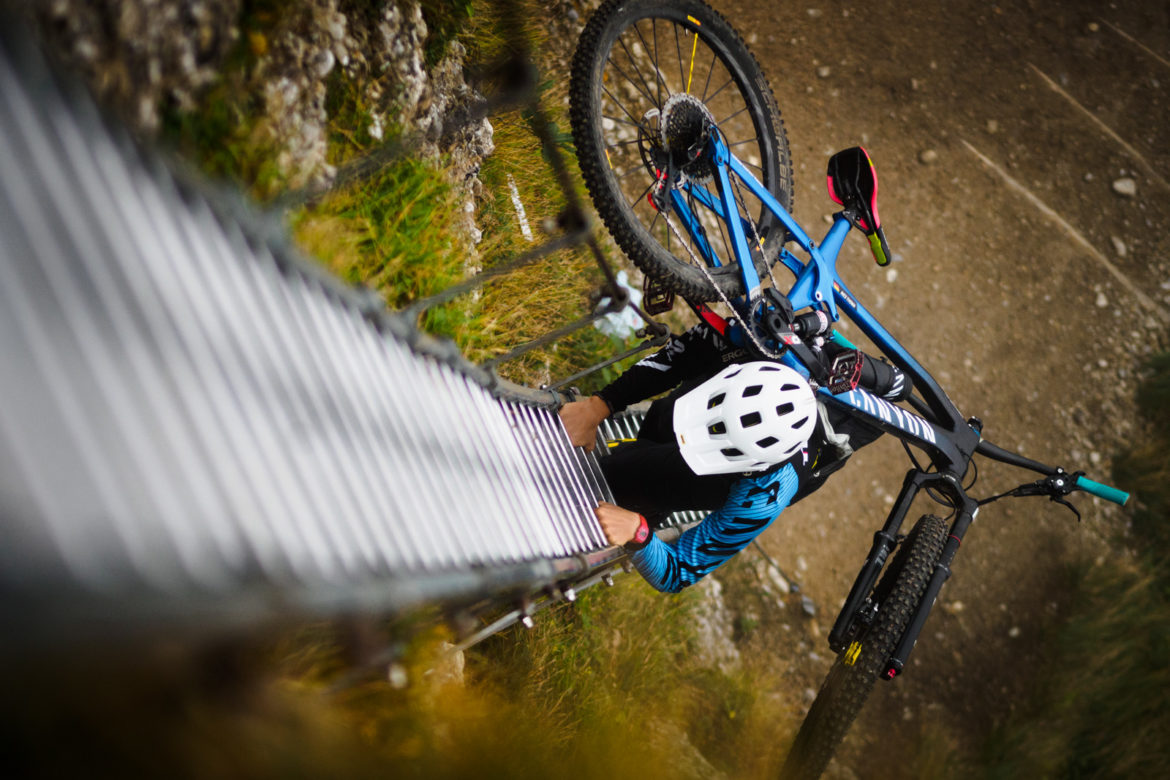
What’s something most people don’t know about you?
Hmm. Maybe not many people know that I have a really bad knee. Many doctors would say that professional sport would not work for me, but I am super careful with it. I know what is good and what doesn’t work and I sometimes do some strange-looking things because I know it works for my knee best in that situation. For example, I use flat pedals on the road bike a lot. It looks stupid but works perfectly for me. So what.
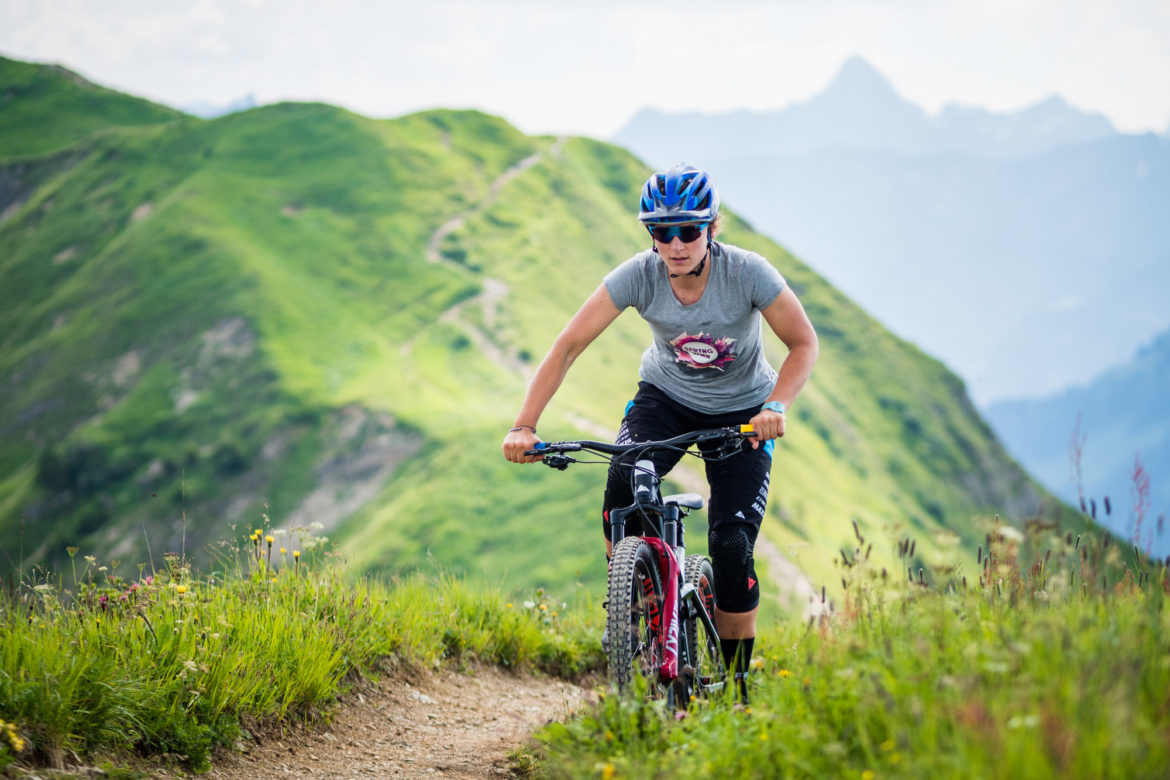
Do you have any plans for what you want to do after professional bike racing?
I am not sure if there will be a time after riding or if I will just always ride. I definitely like to be out there and riding bikes is just the most exciting and fun thing to do. But yeah there will be a time after racing where I have to think if I should go back to school and work as a teacher (what I studied) or if I will stay in the bike industry. I am not sure yet. For sure I get easily bored by doing the same thing 24/7 so maybe a combination of bike industry and teaching could work for me too. We will see.
